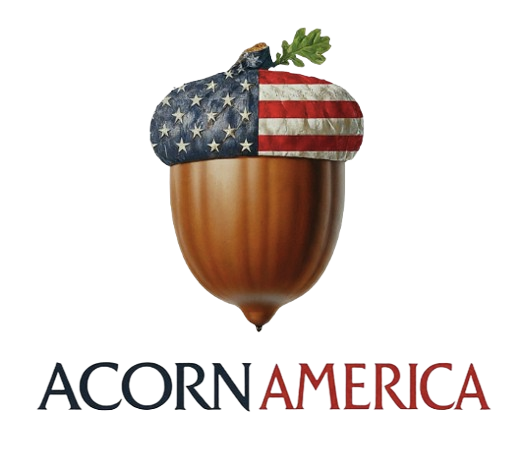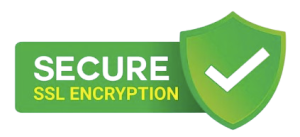Claims of a 6400 government subsidy are circulating online, often through advertisements and social media. These promotions promise significant financial help, leading many to question their legitimacy. It's vital to understand the truth behind these claims to protect yourself from potential scams.
Understanding the $6400 Subsidy Claim
The idea of a universal $6400 government subsidy for everyone is highly questionable. While the Affordable Care Act (ACA), or Obamacare, does offer subsidies for eligible individuals to afford health insurance, these are not given as a $6400 lump sum.
Instead, ACA subsidies primarily come as:
- Premium Tax Credits: These credits reduce your monthly health insurance premiums. The amount varies based on your income, household size, and the cost of a benchmark silver plan in your area. In 2024, individuals earning between 100% and 400% of the federal poverty level may qualify. Depending on income, the subsidy can even cover the entire premium.
- Cost-Sharing Reductions: These lower your out-of-pocket healthcare costs like deductibles, co-pays, and co-insurance if you enroll in a silver-level plan through the Health Insurance Marketplace.
While the total value of ACA subsidies can reach around $6400 annually for some, with an average monthly advance premium tax credit (APTC) of about $536 in early 2024, this isn't a direct payment for general use. It's applied to lower monthly health insurance premiums. The consistent use of the $6400 figure in misleading ads seems to be a tactic to exploit awareness of health insurance subsidies and appear legitimate. This consistency across platforms suggests a coordinated scam effort.

Ready to Unlock Your Dreams? Find the Perfect Loan Today!
How the $6400 Subsidy Scam Works
The $6400 subsidy scam often starts with appealing posts on social media like TikTok, YouTube, and Facebook. These posts often include links to non-governmental websites . Another common method is robocalls from people falsely claiming to represent organizations like "Health Lifeline" or "Vital Health Grants," offering the $6400 subsidy for everyday expenses. These calls often create urgency with claims of a limited-time offer.
The websites linked in these scams often use chatbots to collect your personal information, asking about your age, income, and whether you have Medicaid or Medicare, falsely suggesting eligibility. After this, you're usually asked to call a specific phone number. Sometimes, the links lead to irrelevant or unexpected content, a clear sign of illegitimacy. Some scam ads even use AI to mimic celebrity or politician voices to appear credible.
The goal of these tactics is to trick you into sharing personal and financial information for identity theft or other fraud. With rising living costs, many are financially vulnerable, making them more susceptible to offers that seem too good to be true.
Recognizing the Red Flags
Knowing the warning signs is key to avoiding this scam. Be suspicious of the following:
- Promises of a specific dollar amount: Any offer of a fixed subsidy like $6400 should be viewed with caution. Legitimate ACA subsidies vary.
- Claims of "free money" for general expenses: Offers of government money for gas, groceries, or rent are almost always scams . Government subsidies usually target specific needs like healthcare.
- Unsolicited contact: Be wary of unsolicited offers via social media, robocalls, texts, or emails. Legitimate agencies rarely initiate contact this way.
- Pressure to act immediately: Claims of "limited-time offers" or "eligibility ending today" are common scam tactics.
- Requests for upfront personal information: Never give your Social Security number or bank account details upfront. Legitimate applications use official channels.
- Suspicious links: Links leading to non-government websites or irrelevant content are red flags.
- Chatbot interactions: Be skeptical of websites where a chatbot asks for personal information before providing contact details.
- AI-generated endorsements: Watch out for ads using AI voices of well-known figures.
Legitimate Government Assistance
While the $6400 subsidy is likely a scam, real government financial aid programs exist. These usually require an application and are for specific purposes. The government doesn't typically reach out with unsolicited offers of free money.
For reliable information, use official sources:
- Benefits.gov: Offers support for food, housing, healthcare, childcare, and Social Security. (https://www.benefits.gov/)
- GovLoans.gov: Provides assistance for small businesses, education, housing, and other needs. (https://www.govloans.gov/)
- Grants.gov: A legitimate source for information on government grants (mostly for organizations, not personal expenses). (https://www.grants.gov/)
- HealthCare.gov: For information on ACA subsidies and enrollment in the Health Insurance Marketplace. (https://www.healthcare.gov/) Real ACA subsidies are only available through the official Health Insurance Marketplace.
Examples of the Scam in Action
Here are some examples of how the $6400 subsidy scam unfolds:
- Social Media Posts: Many posts on platforms like Facebook and TikTok claim you can get a $6400 government subsidy . These often link to websites like
chat[.]healthbenefitsnow[.]com, where a chatbot asks for basic information and then prompts a phone call. - Robocalls: Callers like "Bella from Health Lifeline" offer the $6400 subsidy for living expenses with an urgent deadline, trying to direct you to a third-party website or call center.
- Scam Text Messages: Texts promising the $6400 subsidy often contain phishing links to steal your personal information.
- Misleading Social Media Profiles: Profiles like "Harmony Wilder" on Facebook have been used to redirect users to third-party insurance companies under the guise of offering the subsidy.
Official Warnings
Authorities have issued warnings about this scam:
- The Federal Trade Commission (FTC) warns that the government will never contact you out of the blue with offers of free money and will never demand upfront fees or payment via gift cards.
- The Department of Health and Human Services (HHS) Office of Inspector General (OIG) has alerted the public to scams using social media and fake websites to offer fake HHS grants in exchange for payment or personal information.
- The Better Business Bureau (BBB) confirms the advertised $6400 subsidy is not legitimate and is often a lure to third-party insurance companies.
- Fact-checking organizations like Reuters have debunked these claims, verifying that the $6400 subsidy is not a real government program.
Protecting Yourself from the Scam
Stay safe by following these tips:
- Be very skeptical of unsolicited offers of government grants or subsidies.
- Never give personal information to unknown callers or websites.
- Always verify information directly with official government websites or agencies.
- Avoid clicking on suspicious links in emails or social media posts .
- If you get a robocall offering such a subsidy, just hang up.
- Report any suspected scam attempts to the FTC at ReportFraud.ftc.gov.
- Consider using call-blocking apps to prevent unwanted robocalls.
Conclusion
The advertised $6400 government subsidy is largely a scam designed to steal your personal information. While ACA health insurance subsidies are real, they aren't direct cash payments for general expenses. Be cautious of any offers promising a specific amount of free government money, especially if the contact is unsolicited or creates a sense of urgency. Always rely on official government websites for information and exercise caution online and over the phone to protect yourself from these scams.
Frequently Asked Questions
Is the $6400 government subsidy real?While there isn't a single, universally recognized "$6400 subsidy" program directly from the federal government, the term often surfaces in discussions about government assistance for home energy upgrades or other specific initiatives. It's crucial to verify any offer against official government websites.
What's behind claims of a $6400 government grant?The number $6400 might be associated with aggregated potential savings or incentives from various programs, including tax credits, rebates for energy-efficient appliances, or state-level initiatives. Scammers sometimes exploit this by falsely advertising a simple "$6400 grant."
How can I tell if a $6400 subsidy offer is legitimate?Genuine government programs require applications and have specific eligibility criteria. Be wary of unsolicited calls or emails promising a quick $6400 payout. Always research the program through official government channels like energy.gov or your state's energy office.
Are there any real government programs offering similar amounts?Yes, several programs offer financial assistance for home improvements, potentially totaling around $6400 when combined. These include tax credits for energy efficiency, state-run rebate programs for appliances, and initiatives like the Weatherization Assistance Program.
What are the risks of responding to a $6400 subsidy advertisement?Responding to scam offers can lead to identity theft, financial loss through upfront fees, or being signed up for unwanted services. Never give out personal or financial information over the phone or internet to unverified sources.
How can I find legitimate government assistance for home improvements?Start by visiting the official websites of federal agencies like the Department of Energy and the IRS. Your state's government website will also list local programs and incentives.
Is the $6400 subsidy related to any specific government agency?No single agency universally administers a "$6400 subsidy." It's more likely a combination of benefits from different programs. Check with agencies like the Department of Energy, HUD, and your state's housing or energy departments.
What should I do if I've been contacted about a $6400 subsidy?Do not provide any personal information or money. Independently verify the program's existence through official government sources. Report suspicious offers to the Federal Trade Commission (FTC).
Why do scammers use the $6400 figure?The exact reason isn't always clear, but scammers often use round numbers or figures that might sound plausible based on real, albeit more complex, government programs. This can make the offer seem more legitimate at first glance.
Where can I get reliable information about government subsidies and grants?Official government websites ending in ".gov" are the most trustworthy sources. Be cautious of third-party websites or companies claiming to help you access these funds, especially if they charge a fee.






